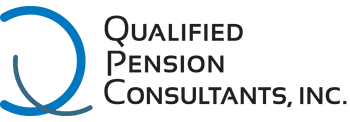FAQ’s
JOINING MY EMPLOYER’S PLAN
This is an opportunity to save for your retirement on a tax-favorable (pre-tax) basis. If your Employer offers a matching contribution, you should consider contributing as much as possible to get the maximum match.
No, 401(k) contributions can only be made through a company sponsored plan.
Yes. If you are trying to save as much as possible, the IRS limits your deferrals to 100% of your pay, up to a certain dollar amount that increases from year to year. The 2019 deferral limit is $19,000. If you are age 50 or over, you can make an additional deferral of $6,000. This is called a catch-up contribution.
Yes, you can stop your deferrals at any time by letting your Employer know in writing.
You may be able to start again at the next payroll date, or your plan may have certain dates such as the first of each calendar quarter. Let your Employer know when you wish to start again.
Depending on your plan’s investments, you may be able to view your balance online at any time. Investment companies typically provide quarterly paper statements. At a minimum, you will receive an annual statement of your account balance.
ROLLOVERS
Yes. This is called a rollover and it is not a taxable transaction. Check with your current Employer to be sure your plan permits rollovers and that there are no restrictions. Should you terminate your employment, you can roll your account balance to your new Employer or to an Individual Retirement Account (IRA).
VESTING
Think of vesting as ownership. It is based on your years of service with your Employer. Depending on the vesting schedule in your plan, you will gain more ownership in your Employer’s contributions the longer you work for your Employer. Money you defer from your paycheck is always 100% immediately vested. You own it. Money you roll into this plan is always 100% immediately vested and can be distributed to you at any time. Matching contributions or discretionary annual contributions made by your Employer will vest to you based on your plan’s vesting schedule. Your vested percent will show on your investment statements.
TAKING MONEY OUT OF THE PLAN
There are several ways you can withdraw your account, but they depend on whether or not these options are included in your Employer’s plan. These options are detailed in the questions below.
If your plan permits participant loans, you can borrow 50% of your vested account balance up to a maximum of $50,000. Loans must be repaid by monthly payroll deduction and have a repayment period of 5 years. There may be other restrictions on what funds are available for loans.
If your plan permits hardship distributions, they can be requested for the following reasons:
- Educational expense
- Medical expenses
- Funeral expenses
- Purchase of a primary residence
- Avoidance of foreclosure on your primary residence
- Expenses to repair damage to primary residence that are not reimbursable by insurance
Hardship distributions do not have to be paid back like a loan. They are taxable when you receive the money. A mandatory 20% will be withheld from the distribution for Federal Income Tax. If you are under age 59-1/2, there is an early withdrawal penalty of 10% of the distribution.
If your plan permits, you can request all or a portion of your account balance at any time, usually after the age of 59-1/2. Distributions are subject to tax and a mandatory 20% will be withheld from the distribution for Federal Income Tax. If you are under age 59-1/2, there is an early withdrawal penalty of 10% of the distribution.
Your balance is available to you when you terminate your employment, become disabled or at your death.
This information is contained in the Summary Plan Description you would have received from your employer when you enrolled in the plan. If you do not have a copy, you can request one from your Employer.
OTHER QUESTIONS
Yes, all creditors are prohibited from accessing your plan investments except in the case of an IRS tax delinquency.



